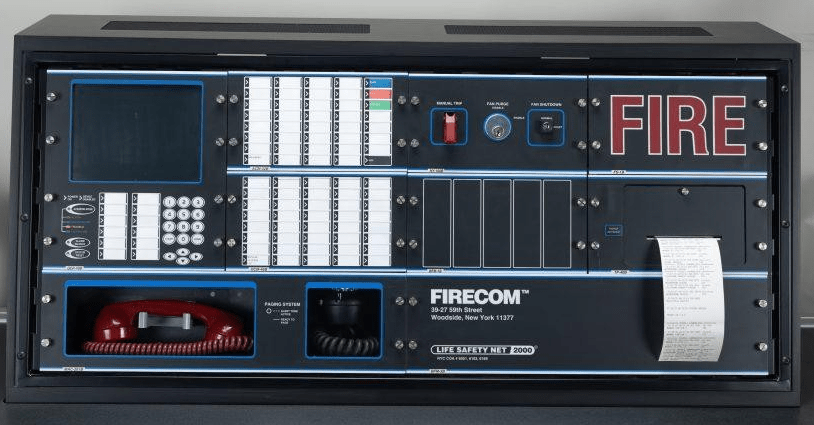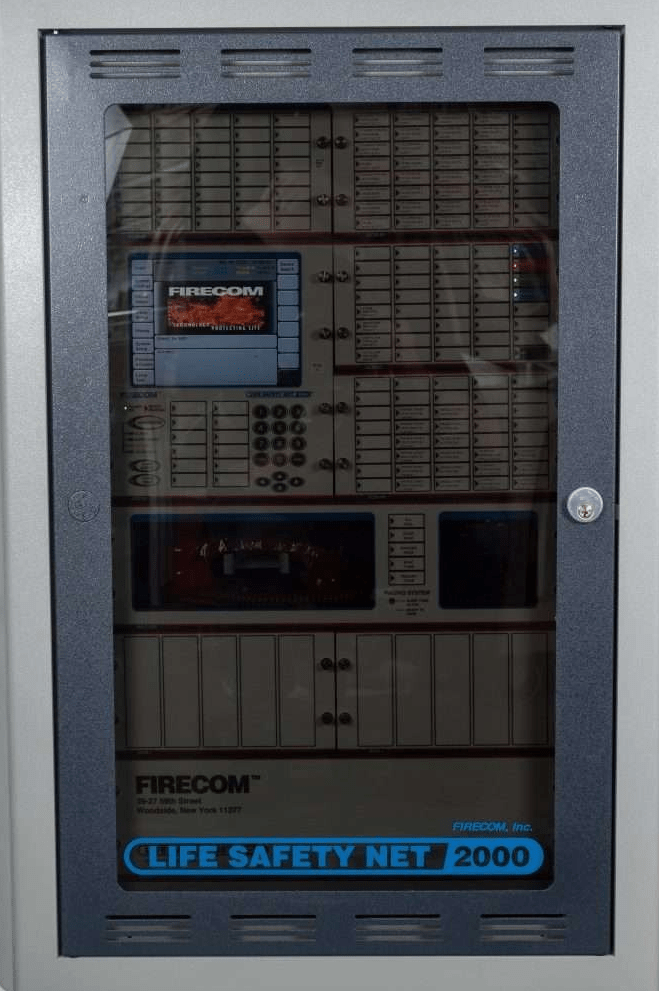
Compatibility of EST3 devices with EST4 panels
In the world of electronic devices, compatibility plays a crucial role in ensuring seamless performance and optimal functionality. When it comes to the integration of different systems, one such scenario arises with the compatibility between EST3 devices and EST4 panels. This article aims to explore the various aspects of this compatibility, including the understanding of EST3 devices, exploring EST4 panels, the concept of compatibility itself, assessing compatibility, potential issues, solutions, and future trends in this realm.
Understanding EST3 Devices
EST3 devices are renowned for their advanced capabilities and reliability in fire and life safety systems. These devices are meticulously designed to offer comprehensive protection in various environments, such as commercial buildings, healthcare facilities, educational institutions, and more. EST3 devices encompass a wide range of equipment, including control panels, smoke detectors, notification appliances, and communication modules.
When it comes to fire and life safety systems, EST3 devices are considered top-of-the-line. With their cutting-edge technology and robust design, they provide a level of protection that is unmatched in the industry. Whether it’s a small office building or a sprawling hospital complex, EST3 devices are trusted to keep people safe in any environment.
Key Features of EST3 Devices
The key features of EST3 devices set them apart from their counterparts:
- Advanced Detection Technology: EST3 devices utilize cutting-edge detection technology to ensure prompt and accurate fire detection. With their sophisticated sensors and algorithms, they can quickly identify the presence of smoke, heat, or flames, allowing for immediate response and minimizing the risk of fire-related damage.
- Intuitive User Interface: The user interface of EST3 devices is designed to be intuitive, allowing for easy system management and monitoring. Whether it’s configuring settings, reviewing alarm logs, or conducting routine maintenance, the user-friendly interface simplifies the process, saving time and effort.
- Scalability: EST3 devices offer scalability options, allowing the system to expand and adapt to changing needs. As buildings or facilities grow or undergo renovations, EST3 devices can easily accommodate the increased demand for fire and life safety equipment. This scalability ensures that the system remains effective and efficient, even as the environment evolves.
EST3 devices are not just technologically advanced; they are also designed with the end user in mind. The intuitive interface and scalability options make them a preferred choice for facility managers, fire safety professionals, and building owners alike. With EST3 devices, maintaining a high level of fire and life safety has never been easier.
Technical Specifications of EST3 Devices
EST3 devices boast impressive technical specifications, which include:
- Compatibility with diverse communication protocols, ensuring seamless integration with other systems. Whether it’s connecting to a building management system, an emergency communication network, or a security system, EST3 devices can easily interface with various protocols, allowing for efficient and effective collaboration.
- Multiple addressable points for efficient device management. With the ability to address individual devices within the system, EST3 devices provide granular control and monitoring. This level of detail enables quick identification of any issues or malfunctions, streamlining maintenance and troubleshooting processes.
- Enhanced power management capabilities to optimize system efficiency. EST3 devices are designed to minimize power consumption without compromising performance. Through intelligent power management features, they can operate efficiently, reducing energy costs and extending the lifespan of the system.
EST3 devices are not only powerful in terms of their features and capabilities, but they also excel in their technical specifications. The compatibility with diverse communication protocols, multiple addressable points, and enhanced power management capabilities make them a reliable and efficient choice for any fire and life safety system.
Exploring EST4 Panels
EST4 panels represent the latest innovation in fire alarm systems, pushing the boundaries of performance, flexibility, and integration capabilities. These panels provide a robust foundation for fire alarm control and can be seamlessly integrated with various devices.
When it comes to fire safety, having a reliable and efficient fire alarm system is of utmost importance. The EST4 panels have been designed with this in mind, incorporating advanced features and cutting-edge technology to ensure optimal performance.
Primary Characteristics of EST4 Panels
The primary characteristics of EST4 panels include:
- Powerful Processing: EST4 panels are equipped with advanced processors, delivering exceptional performance and rapid response times.
- Expanded Connectivity: These panels support a wide array of communication protocols, allowing for efficient integration with other devices and systems.
- Flexible Configuration: EST4 panels offer configurable options to meet the specific requirements of different applications.
With their powerful processing capabilities, the EST4 panels can handle complex algorithms and calculations, ensuring accurate and timely detection of fire incidents. This enables swift response and minimizes the risk of damage or harm.
Moreover, the expanded connectivity of these panels opens up a world of possibilities for integration. They can seamlessly communicate with other devices such as smoke detectors, heat sensors, and emergency lighting systems, creating a comprehensive fire safety network.
The flexible configuration options of EST4 panels allow for customization based on the unique needs of each application. Whether it’s a small office building or a large industrial complex, these panels can be tailored to provide the most effective fire alarm solution.
Technical Aspects of EST4 Panels
Some of the notable technical aspects of EST4 panels are:
- Dual Ethernet ports for increased network redundancy and reliability.
- Sophisticated firmware that supports future upgrades and enhancements.
- High-capacity memory for storing extensive system data.
The inclusion of dual Ethernet ports in the EST4 panels ensures enhanced network redundancy and reliability. This means that even if one port fails, the other will seamlessly take over, ensuring uninterrupted communication and data transfer.
Furthermore, the sophisticated firmware of these panels allows for future upgrades and enhancements. As technology advances and new features become available, the EST4 panels can be easily updated to incorporate these improvements, keeping the fire alarm system up-to-date and efficient.
Lastly, the high-capacity memory of EST4 panels enables the storage of extensive system data. This includes event logs, device configurations, and historical data, providing valuable insights for maintenance and troubleshooting purposes.
In conclusion, EST4 panels are at the forefront of fire alarm system technology, offering powerful processing, expanded connectivity, and flexible configuration options. With their dual Ethernet ports, sophisticated firmware, and high-capacity memory, these panels provide a reliable and efficient solution for fire safety.
The Concept of Compatibility in Electronic Devices
Compatibility, in the context of electronic devices, refers to the ability of different systems, components, or software to work together effectively. It involves harmonious interaction, seamless data exchange, and coordinated functionalities between devices or systems.
Factors Determining Compatibility
Several factors influence the compatibility between electronic devices:
- Communication Protocols: Devices must support compatible communication protocols to establish proper connections.
- Hardware Integration: The physical interfaces and connectors of devices should align for successful compatibility.
- Software Interoperability: Compatibility often depends on the software’s ability to communicate and exchange data efficiently.
Importance of Compatibility in Device Performance
Compatibility is vital for ensuring optimal device performance and maximizing the efficiency of integrated systems. When devices are compatible, they can seamlessly share information, react to events, and coordinate actions, thereby enhancing overall functionality and increasing user satisfaction.
Assessing Compatibility of EST3 Devices with EST4 Panels
Assessing the compatibility between EST3 devices and EST4 panels is crucial to ensure their harmonious integration and to unlock the full potential of both systems. The compatibility analysis methodology involves a comprehensive evaluation of technical specifications, communication protocols, hardware interfaces, and software capabilities.
Compatibility Analysis Methodology
A comprehensive compatibility analysis involves several steps to ensure a thorough assessment:
- Identifying the technical specifications and requirements: The first step is to gather detailed information about the technical specifications and requirements of both EST3 devices and EST4 panels. This includes understanding the functionalities, features, and limitations of each system.
- Evaluating the compatibility of communication protocols, hardware interfaces, and software capabilities: Once the technical specifications are known, the next step is to evaluate the compatibility of communication protocols, hardware interfaces, and software capabilities between EST3 devices and EST4 panels. This involves analyzing the compatibility of data transfer protocols, such as RS-485 or Ethernet, as well as the compatibility of hardware interfaces, such as input and output connections.
- Testing the interoperability of sample devices: To validate the compatibility, it is essential to conduct interoperability tests using sample devices. These tests involve connecting EST3 devices with EST4 panels and assessing their ability to communicate, exchange data, and function together seamlessly.
Results and Interpretation of Compatibility Assessment
Based on compatibility assessments, it is determined whether EST3 devices and EST4 panels can be seamlessly integrated. The results provide essential insights into interoperability, potential limitations, and any necessary adaptations or configurations required to ensure successful compatibility.
For example, the compatibility analysis may reveal that while EST3 devices and EST4 panels can communicate effectively, certain features or functionalities may not be fully supported. In such cases, additional configurations or adaptations may be necessary to ensure optimal compatibility.
Furthermore, the compatibility assessment can also help identify potential limitations or constraints that may arise during the integration process. For instance, it may uncover issues related to power supply requirements, data transfer speeds, or compatibility with third-party devices.
Overall, the compatibility assessment plays a crucial role in ensuring a seamless integration between EST3 devices and EST4 panels. It provides valuable insights into the compatibility of technical specifications, communication protocols, hardware interfaces, and software capabilities, helping to unlock the full potential of both systems and enhance their overall performance.
Potential Issues and Solutions in EST3 and EST4 Compatibility
Despite efforts to ensure compatibility, certain issues may arise during the integration of EST3 devices with EST4 panels. However, it is crucial to have viable solutions to mitigate these challenges and ensure a smooth working system.
Common Compatibility Problems
Some common compatibility problems between EST3 devices and EST4 panels include:
- Incompatible communication protocols
- Hardware interface mismatches
- Data exchange inconsistencies
Troubleshooting and Resolving Compatibility Issues
To troubleshoot and resolve compatibility issues, the following steps can be taken:
- Ensure all devices are running the latest firmware or software versions.
- Check for firmware updates or patches designed to address compatibility issues.
- Engage technical support to investigate and resolve any identified compatibility issues.
When dealing with incompatible communication protocols, it is important to understand the specific protocols used by the EST3 devices and EST4 panels. This knowledge will help in identifying the root cause of the compatibility issue and finding the appropriate solution. In some cases, a protocol converter or gateway device may be required to bridge the gap between the two systems.
Hardware interface mismatches can occur when the physical connectors or wiring configurations of the EST3 devices do not align with the corresponding interfaces on the EST4 panels. To resolve this, a thorough examination of the hardware specifications and pinouts is necessary. Adapters or converters may be needed to ensure proper connectivity between the devices.
Data exchange inconsistencies can lead to communication errors and data corruption between the EST3 devices and EST4 panels. It is crucial to verify that the data formats and protocols used for exchanging information are compatible. This may involve inspecting the data structures, message formats, and encoding schemes. In some cases, custom data mapping or translation routines may need to be implemented to ensure seamless data exchange.
Regularly checking for firmware updates or patches is essential to address compatibility issues. Manufacturers often release updates to improve compatibility and resolve known issues. By keeping the firmware or software up to date, the chances of encountering compatibility problems can be significantly reduced.
In situations where compatibility issues persist despite following the recommended steps, engaging technical support becomes crucial. The expertise of the support team can help in diagnosing and resolving complex compatibility problems. They may provide specific guidance, perform in-depth analysis, or offer customized solutions to ensure the successful integration of EST3 devices with EST4 panels.
By diligently addressing compatibility issues and implementing the appropriate solutions, the integration of EST3 devices with EST4 panels can be achieved seamlessly. This compatibility ensures the efficient operation of the system, enhancing overall safety and security.
Future Trends in EST Device and Panel Compatibility
As technology continues to evolve, the compatibility between EST devices and panels is expected to witness significant advancements, driven by technological innovations and industry requirements.
In today’s fast-paced world, where technology is constantly evolving, it is crucial for EST devices and panels to keep up with the latest trends. The future holds exciting possibilities for the compatibility between these devices, as they become more interconnected and intelligent.
Technological Advancements Impacting Compatibility
Several technological advancements will influence the future of EST device and panel compatibility:
- IoT Integration: The integration of EST devices and panels with the Internet of Things (IoT) will enhance connectivity and interoperability. Imagine a world where fire safety systems can communicate with other smart devices in your home or office, providing real-time updates and alerts.
- Standardization Efforts: Industry initiatives to standardize communication protocols will simplify compatibility across different systems. This means that devices and panels from different manufacturers will be able to seamlessly work together, eliminating the need for complex integration processes.
- Enhanced Interoperability Testing: Advanced testing procedures will be developed to ensure seamless compatibility between devices and panels. Rigorous testing will guarantee that these systems can communicate effectively and respond to emergencies efficiently.
These technological advancements are just the tip of the iceberg. The future holds even more exciting possibilities for the compatibility of EST devices and panels.
Predicted Changes in EST Device and Panel Compatibility
With technological advancements, compatibility between EST devices and panels is likely to experience the following changes:
- Increased Cross-Compatibility: Devices and panels from different manufacturers will have improved interoperability. This means that you will have more options when choosing devices and panels, as they will be compatible with each other, regardless of the brand.
- Enhanced Plug-and-Play Capabilities: Simplified installation and configuration processes will minimize compatibility challenges. Gone are the days of complex setup procedures. With plug-and-play capabilities, you can easily connect and configure your EST devices and panels, saving time and effort.
- Intelligent System Integration: EST devices and panels will seamlessly integrate with other systems, sharing information and improving overall performance. Imagine a fire safety system that can communicate with your security system, providing a comprehensive approach to protecting your property and ensuring the safety of its occupants.
The future of EST device and panel compatibility is bright. As technology continues to advance, these systems will become more intelligent, interconnected, and user-friendly.
In conclusion, the compatibility of EST3 devices with EST4 panels involves a thorough understanding of both systems, assessment of compatibility, and troubleshooting potential issues. As compatibility standards evolve and new technologies emerge, the seamless integration of EST devices and panels will pave the way for advanced fire and life safety systems.


